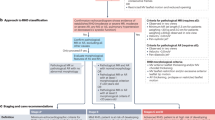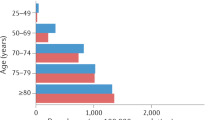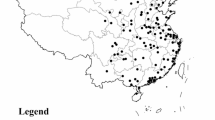Abstract
In the 21st century, rheumatic fever (RF) and rheumatic heart disease (RHD) are neglected diseases of marginalized communities. Globally, RHD remains the most-common cardiovascular disease in young people aged <25 years. Although RF and RHD have been almost eradicated in areas with established economies, migration from low-income to high-income settings might be responsible for a new burden of RHD in high-income countries. The World Heart Federation (WHF) and its Working Group on RF and RHD unites global experts, combines their experience and enthusiasm, and provides a platform for RHD control. This paper is a declaration of the WHF institutional strategic goal—a 25% reduction in premature deaths from RF and RHD among individuals aged <25 years by the year 2025. The position statement affirms WHF commitments to five key strategic targets: comprehensive register-based control programmes, global access to benzathine penicillin G, identification and development of public figures as 'RHD champions', expansion of RHD training hubs, and support for vaccine development. In this paper, we also review existing barriers to RF and RHD control and identify the actions required to change the trajectory of control for these diseases. This approach provides the foundation for governments, civil society, patient advocates, clinicians, researchers, and funding agencies to develop partnerships and unify global efforts to control RF and RHD. The WHF plans to expand this position statement to an operational plan that will be founded on science, research, and quantifiable progress indicators to impact positively on the millions of people who are affected by RHD and its long-term sequelae.
This is a preview of subscription content, access via your institution
Access options
Subscribe to this journal
Receive 12 print issues and online access
$189.00 per year
only $15.75 per issue
Buy this article
- Purchase on SpringerLink
- Instant access to full article PDF
Prices may be subject to local taxes which are calculated during checkout
Similar content being viewed by others
References
Guilherme, L., Kalil, J. & Cunningham, M. Molecular mimicry in the autoimmune pathogenesis of rheumatic heart disease. Autoimmunity 39, 31–39 (2006).
Bessen, D. E. et al. Contrasting molecular epidemiology of group A streptococci causing tropical and nontropical infections of the skin and throat. J. Infect. Dis. 182, 1109–1116 (2000).
McDonald, M. I. et al. Low rates of streptococcal pharyngitis and high rates of pyoderma in Australian aboriginal communities where acute rheumatic fever is hyperendemic. Clin. Infect. Dis. 43, 683–689 (2006).
Bland, E. F. & Jones, T. D. Rheumatic fever and rheumatic heart disease; a twenty year report on 1,000 patients followed since childhood. Circulation 4, 836–843 (1951).
Carapetis, J. R., Currie, B. J. & Mathews, J. D. Cumulative incidence of rheumatic fever in an endemic region: a guide to the susceptibility of the population? Epidemiol. Infect. 124, 239–244 (2000).
Carapetis, J. R., Steer, A. C., Mulholland, E. K. & Weber, M. The global burden of group A streptococcal diseases. Lancet Infect. Dis. 5, 685–694 (2005).
Gunther, G., Asmera, J. & Parry, E. Death from rheumatic heart disease in rural Ethiopia. Lancet 367, 391 (2006).
Jaiyesimi, F. & Antia, A. U. Childhood rheumatic heart disease in Nigeria. Trop. Geogr. Med. 33, 8–13 (1981).
Kumar, R., Raizada, A., Aggarwal, A. K. & Ganguly, N. K. A community-based rheumatic fever/rheumatic heart disease cohort: twelve-year experience. Indian Heart J. 54, 54–58 (2002).
Gordis, L. The virtual disappearance of rheumatic fever in the United States: lessons in the rise and fall of disease. T. Duckett Jones memorial lecture. Circulation 72, 1155–1162 (1985).
Kaplan, E. L. T. Duckett Jones Memorial Lecture. Global assessment of rheumatic fever and rheumatic heart disease at the close of the century. Influences and dynamics of populations and pathogens: a failure to realize prevention? Circulation 88, 1964–1972 (1993).
Marijon, E. et al. Prevalence of rheumatic heart disease detected by echocardiographic screening. N. Engl. J. Med. 357, 470–476 (2007).
Beaton, A. et al. Echocardiography screening for rheumatic heart disease in Ugandan schoolchildren. Circulation 125, 3127–3132 (2012).
Sliwa, K. & Zilla, P. Rheumatic heart disease: the tip of the iceberg. Circulation 125, 3060–3062 (2012).
Paar, J. A. et al. Prevalence of rheumatic heart disease in children and young adults in Nicaragua. Am. J. Cardiol. 105, 1809–1814 (2010).
Bhaya, M., Panwar, S., Beniwal, R. & Panwar, R. B. High prevalence of rheumatic heart disease detected by echocardiography in school children. Echocardiography 27, 448–453 (2010).
Roberts, K., Colquhoun, S., Steer, A., Remenyi, B. & Carapetis, J. Screening for rheumatic heart disease: current approaches and controversies. Nat. Rev. Cardiol. 10, 49–58 (2012).
Webb, R. H. et al. Optimising echocardiographic screening for rheumatic heart disease in New Zealand: not all valve disease is rheumatic. Cardiol. Young 21, 436–443 (2011).
Murray, C. J. & Lopez, A. D. Global Health Statistics (Harvard University Press, 1996).
Lozano, R. et al. Global and regional mortality from 235 causes of death for 20 age groups in 1990 and 2010: a systematic analysis for the Global Burden of Disease Study 2010. Lancet 380, 2095–2128 (2012).
WHO. Rheumatic fever and rheumatic heart disease. Report of a WHO expert consultation. Geneva, 29 October – 1 November 2001. WHO Technical Report Series 923. [online], (2004).
RHDAustralia. Australian guideline for prevention, diagnosis and management of acute rheumatic fever and rheumatic heart disease (2nd edition) [online], (2012).
Manyemba, J. & Mayosi, B. M. Intramuscular penicillin is more effective than oral penicillin in secondary prevention of rheumatic fever—a systematic review. S. Afr. Med. J. 93, 212–218 (2003).
Feinstein, A. R. et al. Prophylaxis of recurrent rheumatic fever. Therapeutic-continuous oral penicillin vs monthly injections. JAMA 206, 565–568 (1968).
Kassem, A. S., el-Walili, T. M., Zaher, S. R. & Ayman, M. Reversibility of mitral regurgitation following rheumatic fever: clinical profile and echocardiographic evaluation. Indian J. Pediatr. 62, 717–723 (1995).
Chagani, H. S. & Aziz, K. Clinical profile of acute rheumatic fever in Pakistan. Cardiol. Young 13, 28–35 (2003).
Tompkins, D. G., Boxerbaum, B. & Liebman, J. Long-term prognosis of rheumatic fever patients receiving regular intramuscular benzathine penicillin. Circulation 45, 543–551 (1972).
World Heart Federation. History [online], (2012).
Carapetis, J. R. & Zühlke, L. Global research priorities in rheumatic fever and rheumatic heart disease. Ann. Pediatr. Cardiol. 4, 4–12 (2011).
Marijon, E., Mirabel, M., Celemajer, D. S. & Jouven, X. Rheumatic heart disease. Lancet 379, 953–964 (2012).
World Heart Federation. RHDnet. A global resource for rheumatic heart disease. For health professionals and communities [online], (2011).
Robertson, K. A., Volmink, J. A. & Mayosi, B. M. Antibiotics for the primary prevention of acute rheumatic fever: a meta-analysis. BMC Cardiovasc. Disord. 5, 11 (2005).
Stollerman, G. H. & Rusoff, J. H. Prophylaxis against group a streptococcal infections in rheumatic fever patients; use of new repository penicillin preparation. JAMA 150, 1571–1575 (1952).
Mayosi, B. et al. The Drakensberg declaration on the control of rheumatic fever and rheumatic heart disease in Africa. S. Afr. Med. J. 96, 246 (2006).
United Nations General Assembly. Political Declaration of the High-level Meeting of the General Assembly on the Prevention and Control of Non-communicable Diseases (A/RES/66/2) [online], (2012).
WHO. Sixty-fifth World Health Assembly: daily notes on proceedings. [online], (2012).
Seckeler, M. D. & Hoke, T. R. The worldwide epidemiology of acute rheumatic fever and rheumatic heart disease. Clin. Epidemiol. 3, 67–84 (2011).
Massell, B. F., Chute, C. G., Walker, A. M. & Kurland, G. S. Pencillin and the marked decrease in mortality and morbidity from rheumatic fever in the United States. N. Engl. J. Med. 318, 280–286 (1988).
Broadbent, A. Defining neglected disease. BioSocieties 6, 51–70 (2011).
WHO. First WHO report on neglected tropical diseases. Working to overcome the global impact of neglected tropical diseases [online], (2010).
Watkins, D. A., Zuhlke, L. J., Engel, M. E. & Mayosi, B. M. Rheumatic fever: neglected again. Science 324, 37 (2009).
Carapetis, J. R. Rheumatic heart disease in developing countries. N. Engl. J. Med. 357, 439–441 (2007).
Moran, M. et al. G-Finder: Global Funding of Innovation for Neglected Diseases. Neglected disease research and development: is innovation under threat? Policy Cures [online], (2011).
Levine, R. Unhealthy competition. Perspectives in Health 11, 31–32 (2007).
Shiffman, J. Donor funding priorities for communicable disease control in the developing world. Health Policy Plan. 21, 411–420 (2006).
Soudarssanane, M. B. et al. Rheumatic fever and rheumatic heart disease: primary prevention is the cost effective option. Indian J. Pediatr. 74, 567–570 (2007).
Irlam, J., Mayosi, B., Engel, M. & Gaziano, T. Primary prevention of acute rheumatic fever and rheumatic heart disease with penicillin in South African children with pharyngitis: a cost-effectiveness analysis [abstract]. Circulation 126, A13130 (2012).
Michaud, C., Rammohan, R. & Narula, J. in Rheumatic Fever (eds Narula, J., Virmani, R., Reddy, K. & Tandon, R.) 485–497 (American Registry of Pathology, 1990).
Institute for Health Metrics and Evaluation. Global Burden of Diseases, Injuries, and Risk Factors Study 2010 [online], (2012).
Karthikeyan, G. et al. Rationale and design of a global rheumatic heart disease registry: the remedy study. Am. Heart J. 163, 535–540 (2012).
Mayosi, B. M. A proposal for the eradication of rheumatic fever in our lifetime. S. Afr. Med. J. 96, 229–230 (2006).
Arguedas, A. & Mohs, E. Prevention of rheumatic fever in Costa Rica. J. Pediatr. 121, 569–572 (1992).
WHO. The global eradication of smallpox: final report of the Global Commission for the Certification of Smallpox Eradication. Geneva, December 1979 [online], (1980).
Cohen, J. M., Moonen, B., Snow, R. W. & Smith, D. L. How absolute is zero? An evaluation of historical and current definitions of malaria elimination. Malar. J. 9, 213 (2010).
Pandey, M., Batzloff, M. R. & Good, M. F. Vaccination against rheumatic heart disease: a review of current research strategies and challenges. Curr. Infect. Dis. Rep. 14, 381–390 (2012).
Dale, J. et al. Group A streptococcal vaccines: paving a path for accelerated development. Vaccine (in press).
KwaZulu-Natal Department of Health. National guidelines on the primary prevention and prophylaxis of rheumatic fever and rheumatic heart disease for health professionals at primary level [online], (1997).
Dajani, A. et al. Guidelines for the diagnosis of rheumatic fever. Jones Criteria, 1992 update. Special Writing Group of the Committee on Rheumatic Fever, Endocarditis and Kawasaki Disease of the Council on Cardiovascular Disease in the Young of the American Heart Association. JAMA 268, 2069–2073 (1992).
The Cardiac Society of Australia and New Zealand. New Zealand Guidelines for rheumatic fever 1. Diagnosis, management and secondary prevention [online], (2006).
Remenyi, B. et al. World Heart Federation criteria for echocardiographic diagnosis of rheumatic heart disease—an evidence-based guideline. Nat. Rev. Cardiol. 9, 297–309 (2012).
Lennon, D., Kerdemelidis, M. & Arroll, B. Meta-analysis of trials of streptococcal throat treatment programs to prevent rheumatic fever. Pediatr. Infect. Dis. J. 28, e259–e264 (2009).
Pruksakorn, S. et al. Epidemiological analysis of non-M-typeable group A Streptococcus isolates from a Thai population in northern Thailand. J. Clin. Microbiol. 38, 1250–1254 (2000).
Spinetto, H., Lennon, D. & Horsburgh, M. Rheumatic fever recurrence prevention: a nurse-led programme of 28-day penicillin in an area of high endemnicity. J. Paediatr. Child Health 47, 228–234 (2011).
Laing, R., Waning, B., Gray, A., Ford, N. & 't Hoen, E. 25 years of the WHO essential medicines lists: progress and challenges. Lancet 361, 1723–1729 (2003).
Broderick, M. P. et al. Serum penicillin G levels are lower than expected in adults within two weeks of administration of 1.2 million units. PLoS ONE 6, e25308 (2011).
Kaplan, E. L. Benzathine penicillin G: a documentably important antibiotic in need of a tune-up? Pediatr. Infect. Dis. J. 31, 726–728 (2012).
Kaplan, E. L. et al. Pharmacokinetics of benzathine penicillin G: serum levels during the 28 days after intramuscular injection of 1,200,000 units. J. Pediatr. 115, 146–150 (1989).
WHO. The Selection and Use of Essential Medicines. Report of the WHO expert committee 2011 (including the 17thWHO Model List of Essential Medicine, and the 3rdWHO Model List of Essential Medicines for Children) (WHO, 2011).
Gasse, B. et al. Determinants of poor adherence to secondary antibiotic prophylaxis for rheumatic fever recurrence on Lifou, New Caledonia: a retrospective cohort study. BMC Public Health 13, 131 (2013).
De Holanda, E. et al. Trends in rheumatic fever: clinical aspects and perspectives in prophylactic treatments. Expert Opin. Drug Deliv. 9, 1099–1110 (2012).
Australian New Zealand Clinical Trials Registry. Improving delivery of secondary prophylaxis for rheumatic heart disease. Trial ID: ACTRN12613000223730 [online], (2012).
Soper, J., Chan, G. T., Skinner, J. R., Spinetto, H. D. & Gentles, T. L. Management of oral anticoagulation in a population of children with cardiac disease using a computerised system to support decision-making. Cardiol. Young 16, 256–260 (2006).
Pastakia, S. D. et al. Implementation of a pharmacist managed anticoagulation clinic in Eldoret, Kenya. Southern Med. Review 3, 20–23 (2010).
Diao, M. et al. Pregnancy in women with heart disease in sub-Saharan Africa. Arch. Cardiovasc. Dis. 104, 370–374 (2011).
Nqayana, T., Moodley, J. & Naidoo, D. P. Cardiac disease in pregnancy. Cardiovasc. J. Afr. 19, 145–151 (2008).
Otto, H., Saether, S. G., Banteyrga, L., Haugen, B. O. & Skjaerpe, T. High prevalence of subclinical heart disease in pregnant women in a developing country: an echocardiographic study. Echocardiography 28, 1049–1053 (2011).
Pezzella, A. T. Global aspects of cardiothoracic surgery with focus on developing countries. Asian Cardiovasc. Thorac. Ann. 18, 299–310 (2010).
Viali, S., Saena, P. & Futi, V. Rheumatic fever programme in Samoa. N. Z. Med. J. 124, 26–35 (2011).
Shuhaiber, J. & Anderson, R. J. Meta-analysis of clinical outcomes following surgical mitral valve repair or replacement. Eur. J. Cardiothorac. Surg. 31, 267–275 (2007).
Gometza, B., al-Halees, Z., Shahid, M., Hatle, L. K. & Duran, C. M. Surgery for rheumatic mitral regurgitation in patients below twenty years of age. An analysis of failures. J. Heart Valve Dis. 5, 294–301 (1996).
Steer, A. C. et al. High prevalence of rheumatic heart disease by clinical and echocardiographic screening among children in Fiji. J. Heart Valve Dis. 18, 327–335 (2009).
Conway, M. D., Gupta, S. & Khajavi, K. Addressing Africa's health workforce crisis. McKinsey Quarterly (November 2007).
Nordet, P., Lopez, R., Dueñas, A. & Luis, S. Prevention and control of rheumatic fever and rheumatic heart disease: the Cuban experience (1986-1996-2002). Cardiovasc. J. Afr. 19, 135–140 (2008).
Robertson, K. A., Volmink, J. A. & Mayosi, B. M. for the Writing Committee, 1stAll Africa Workshop on Rheumatic Fever and Rheumatic Heart Disease. Towards a uniform plan for the control of rheumatic fever and rheumatic heart disease in Africa—the Awareness Surveillance Advocacy Prevention (ASAP) Programme. S. Afr. Med. J. 96, 241–245 (2006).
Bach, J. F. et al. 10-year educational programme aimed at rheumatic fever in two French Caribbean islands. Lancet 347, 644–648 (1996).
Gordis, L. Effectiveness of comprehensive-care programs in preventing rheumatic fever. N. Engl. J. Med. 289, 331–335 (1973).
Strasser, T. et al. The community control of rheumatic fever and rheumatic heart disease: report of a WHO international cooperative project. Bull. World Health Organ. 59, 285–294 (1981).
Forrest, C. B., Bartek, R. J., Rubinstein, Y. & Groft, S. C. The case for a global rare-diseases registry. Lancet 377, 1057–1059 (2011).
Atun, R., Bennett, S. & Duran, A. Policy brief. When do vertical (stand-alone) programmes have a place in health systems? WHO on behalf of the European Observatory on Health Systems and Policies [online], (2008).
Acknowledgements
We acknowledge and thank the other members of the World Heart Federation Working Group on Rheumatic Fever and Rheumatic Heart Disease (Azza Abdul-Fadl, Ann Bolger, Dayi Hu, Samuel Kingue, Diana Lennon, Alan Maisel, Ana Mocumbi, Regina Muller, Craig Sable, Anita Saxena, and Tomas Sanabria) for their critical review of the manuscript. We also thank the Working Group, World Heart Federation personnel (Alice Grainger-Gasser, Stephen Marko, Johanna Ralston, Sidney C. Smith Jr, and Kelly Worden) and experts in the field (Rohan Greenland, Lyn Roberts, Andrew Steer, and Liesl Zuhlke) for their input into the development of the position statement at the Strategic Planning Group meeting on 16 April 2012 in Dubai, United Arab Emirates. We acknowledge the Medtronic Foundation for their support of the World Heart Federation Working Group on Rheumatic Fever and Rheumatic Heart Disease.
Author information
Authors and Affiliations
Contributions
All authors researched data for the article, contributed to the discussion of content, and reviewed/edited the manuscript before submission. The paper was written by B. Remenyi and R. Wyber. The authors represent the World Heart Federation Working Group on Rheumatic Fever and Rheumatic Heart Disease. The manuscript was prepared on behalf of Working Group members.
Corresponding author
Ethics declarations
Competing interests
The authors declare no competing financial interests.
Rights and permissions
About this article
Cite this article
Remenyi, B., Carapetis, J., Wyber, R. et al. Position statement of the World Heart Federation on the prevention and control of rheumatic heart disease. Nat Rev Cardiol 10, 284–292 (2013). https://doi.org/10.1038/nrcardio.2013.34
Published:
Issue date:
DOI: https://doi.org/10.1038/nrcardio.2013.34
This article is cited by
-
The global burden and risk factors of cardiovascular diseases in adolescent and young adults, 1990–2019
BMC Public Health (2024)
-
Analysis and comparison of the trends in burden of rheumatic heart disease in China and worldwide from 1990 to 2019
BMC Cardiovascular Disorders (2023)
-
Sub-clinical rheumatic heart disease (RHD) detected by hand-held echocardiogram in children participating in a school-based RHD prevention program in Tanzania
BMC Cardiovascular Disorders (2023)
-
Global burden of rheumatic heart disease: trends from 1990 to 2019
Arthritis Research & Therapy (2022)
-
Rheumatic heart disease in The Gambia: clinical and valvular aspects at presentation and evolution under penicillin prophylaxis
BMC Cardiovascular Disorders (2021)



